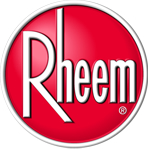Sealing Your Ducts
Ducts is what transfers forced air (BTu's) from your cooling or heating system such
as a furnace, heat pump, or central air conditioner and attaches to every register in your home,
whose job is to circulate heated or cooled air evenly
to every room in a house.
Poorly performing ducts can leak conditioned air and reduce your system’s
efficiency by as much as 20%, by causing it to work harder to keep your
home at a comfortable temperature.
Sealing duct leaks will improve your system’s overall performance and your
home’s comfort and indoor air quality.
You should have your duct system checked to ensure it is operating efficiently to deliver the right amount of conditioned air.
Duct Improvement Checklist
When making improvements to your duct
system.
- Check, measure, and identify leaks with diagnostic equipment.
- Repair or replace damaged, disconnected, or undersized ducts.
- Straighten out flexible ducts that are tangled or crushed.
- Seal leaks and connections with mastic, metal tape, or an aerosolbased sealant. Duct tape should never be used because it will not last.
- Test airflow after sealing ducts.
- Seal all registers and grills tightly to the ducts.
- Insulate ducts in unconditioned areas, like attics and crawl spaces, with duct insulation that carries an R-value of 6 or higher.
- Include a new Media filter as part of any duct system improvements. A Media filter will help improve the indoor air quality as well as keep the system cleaner.
Read more about Media filters and air cleaners ![]()
How to Prevent Duct Contamination
Whether or not you decide to have the air ducts in your home cleaned, committing to a good preventive maintenance program is essential to minimize duct contamination.
To prevent dirt from entering the system:
- Use the highest efficiency air filter recommended by the manufacturer of your heating and cooling system.
- Change filters regularly.
- If your filters become clogged, change them more frequently.
- Be sure you do not have any missing filters and that air cannot bypass filters through gaps around the filter holder.
- When having your heating and cooling system maintained or checked for other reasons, be sure to ask the service provider to clean cooling coils and drain pans.
- During construction or renovation work that produces dust in your home, seal off supply and return registers and do not operate the heating and cooling system until after cleaning up the dust.
- Remove dust and vacuum your home regularly. (Use a high efficiency vacuum (HEPA) cleaner or the highest efficiency filter bags your vacuum cleaner can take. Vacuuming can increase the amount of dust in the air during and after vacuuming as well as in your ducts).
- If your heating system includes in-duct humidification equipment, be sure to operate and maintain the humidifier strictly as recommended by the manufacturer.










